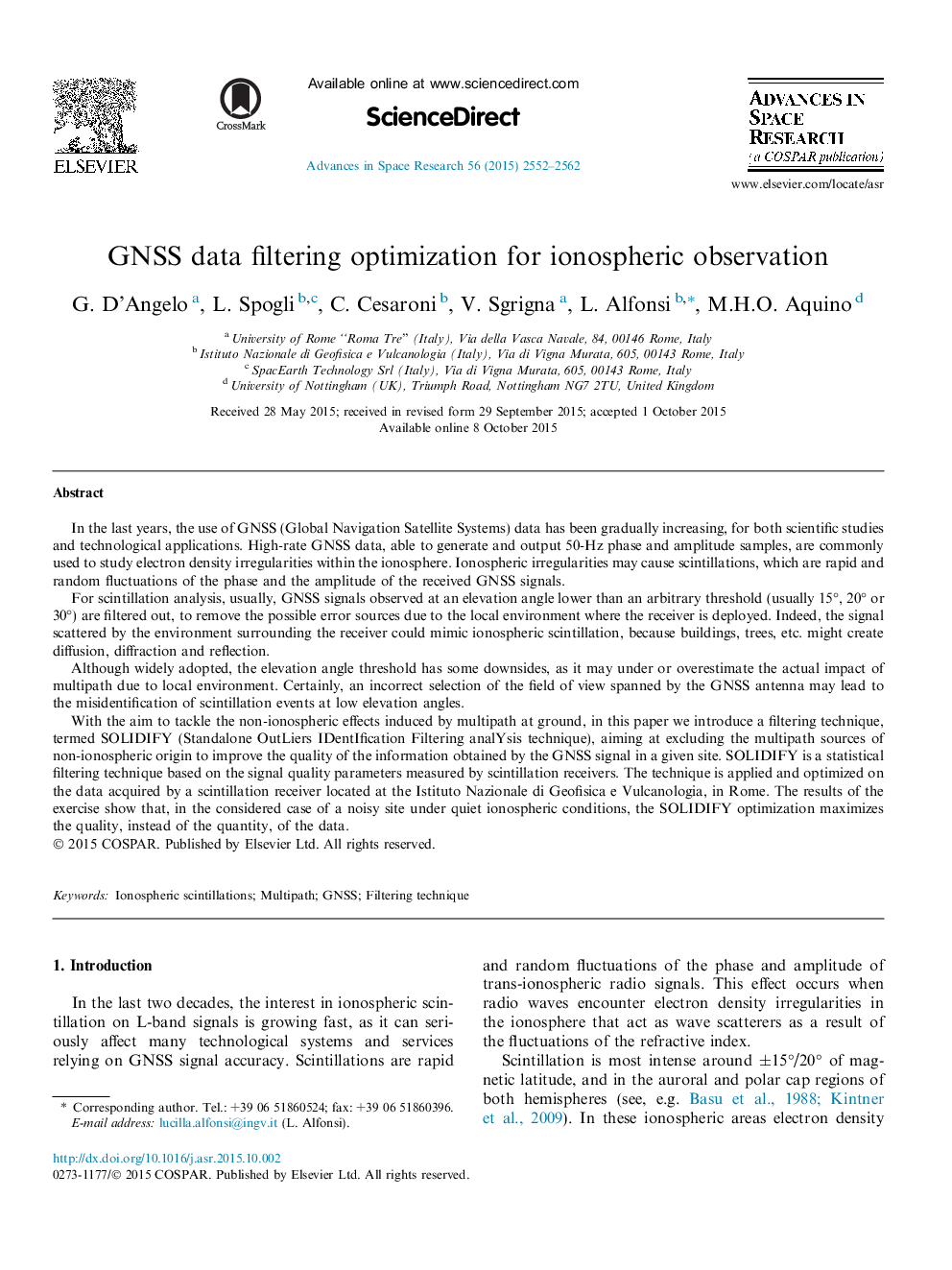| کد مقاله | کد نشریه | سال انتشار | مقاله انگلیسی | نسخه تمام متن |
|---|---|---|---|---|
| 1763603 | 1020012 | 2015 | 11 صفحه PDF | دانلود رایگان |

In the last years, the use of GNSS (Global Navigation Satellite Systems) data has been gradually increasing, for both scientific studies and technological applications. High-rate GNSS data, able to generate and output 50-Hz phase and amplitude samples, are commonly used to study electron density irregularities within the ionosphere. Ionospheric irregularities may cause scintillations, which are rapid and random fluctuations of the phase and the amplitude of the received GNSS signals.For scintillation analysis, usually, GNSS signals observed at an elevation angle lower than an arbitrary threshold (usually 15°, 20° or 30°) are filtered out, to remove the possible error sources due to the local environment where the receiver is deployed. Indeed, the signal scattered by the environment surrounding the receiver could mimic ionospheric scintillation, because buildings, trees, etc. might create diffusion, diffraction and reflection.Although widely adopted, the elevation angle threshold has some downsides, as it may under or overestimate the actual impact of multipath due to local environment. Certainly, an incorrect selection of the field of view spanned by the GNSS antenna may lead to the misidentification of scintillation events at low elevation angles.With the aim to tackle the non-ionospheric effects induced by multipath at ground, in this paper we introduce a filtering technique, termed SOLIDIFY (Standalone OutLiers IDentIfication Filtering analYsis technique), aiming at excluding the multipath sources of non-ionospheric origin to improve the quality of the information obtained by the GNSS signal in a given site. SOLIDIFY is a statistical filtering technique based on the signal quality parameters measured by scintillation receivers. The technique is applied and optimized on the data acquired by a scintillation receiver located at the Istituto Nazionale di Geofisica e Vulcanologia, in Rome. The results of the exercise show that, in the considered case of a noisy site under quiet ionospheric conditions, the SOLIDIFY optimization maximizes the quality, instead of the quantity, of the data.
Journal: Advances in Space Research - Volume 56, Issue 11, 1 December 2015, Pages 2552–2562